September 4th, 2024
Written by Anna Keagy, Gallery Intern
Taylor Swift has been famous ever since her first album, but in 2023 that fame reached new heights. She became the top global artist, due to her Eras Tour, and is currently embarking on one of the highest-grossing tours of all time. To celebrate this amazing artist and all her fans, here are artworks for each of her eras. (Gallery note: even if you are not a T. Swift fan, this is a great read… take a look!)
Taylor Swift (Debut)
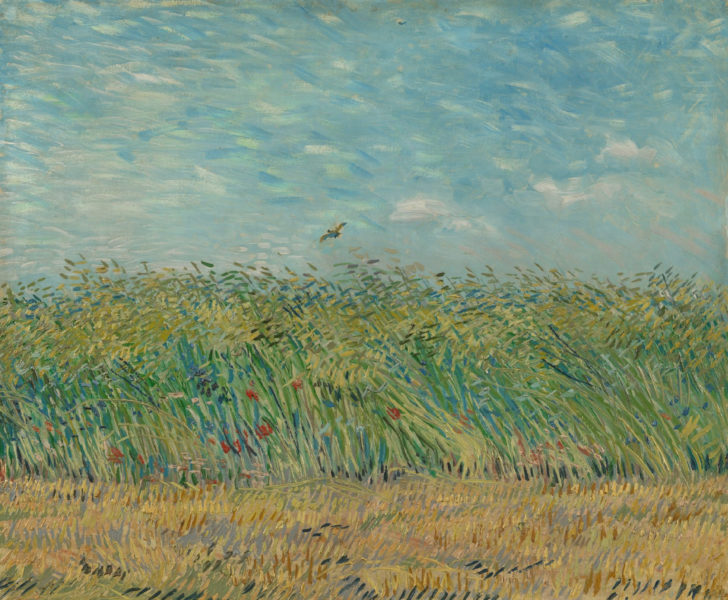
(“Wheatfield with Partridge,” by Vincent Van Gogh, Van Gogh Museum, Amsterdam (Vincent van Gogh Foundation))
Taylor Swift released her first album, titled Taylor Swift (affectionally referred to as “Debut” by fans) in 2006. She was 17 years old. Debut is a country album through and through. Though Swift has long since lost her southern accent, it’s out in full force on this album. She sings about teenage romances that fly high until they end in “redneck heartbreak.” The predominant colors of this album are blue and green, which makes Van Gogh’s “Wheatfield with Patridge” a great representation of Debut. Van Gogh painted many scenes from the countryside using his signature bright blues and greens. Although his wheat fields weren’t in America, it still represents the feel of Swift’s first album.
Fearless
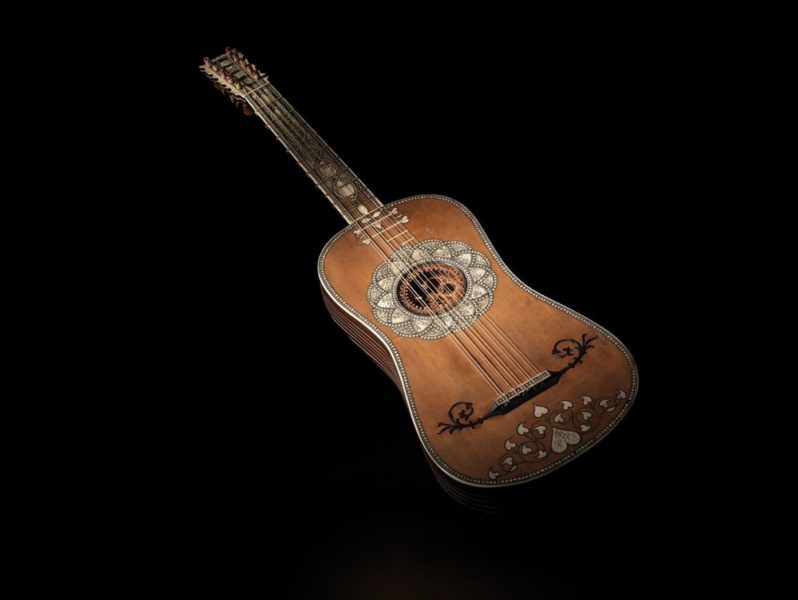
(Guitar attributed to Matteo Sellas, featured in the Metropolitan Museum of Fine Art)
The most famous song on Fearless, Swift’s second album, is Love Story. The song is played on acoustic guitar, and what could be more perfect for that performance than this stunning instrument with intricate heart details? Hearts have become a symbol of the Fearless era. During her performance on the Eras tour, Swift will put her hands up in a heart shape, and thousands of fans will repeat the motion back to her. This heart guitar was made in Venice, Italy, sometime between 1630-1650. It was handcrafted by Matteo Sellas in a traditional Venetian style. The detailing, intricate border, and patterns on the neck of the guitar are made of inlaid bone.
Speak Now
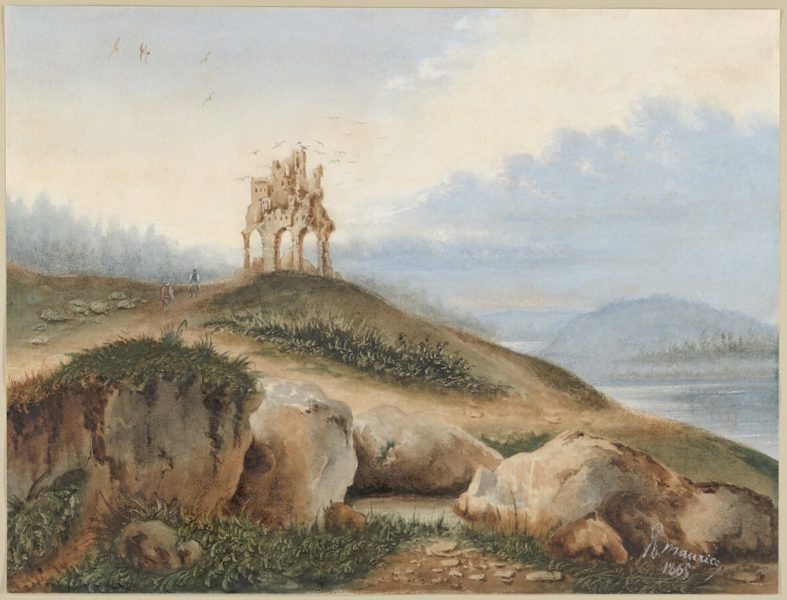
(“Landscape with a Fantastic Castle” by George Sand, featured in the Met)
Speak Now has heavy fairytale themes, with songs like “Enchanted,” “Long Live,” and “The Story of Us.” On “Long Live,” Swift sings, “Long live the walls we crashed through / How the kingdom lights shined just for me and you.” This fantastical castle would fit well in the Speak Now realm. It’s the perfect place for the drama, interrupted weddings, and young love Swift sings about on her album.
Red
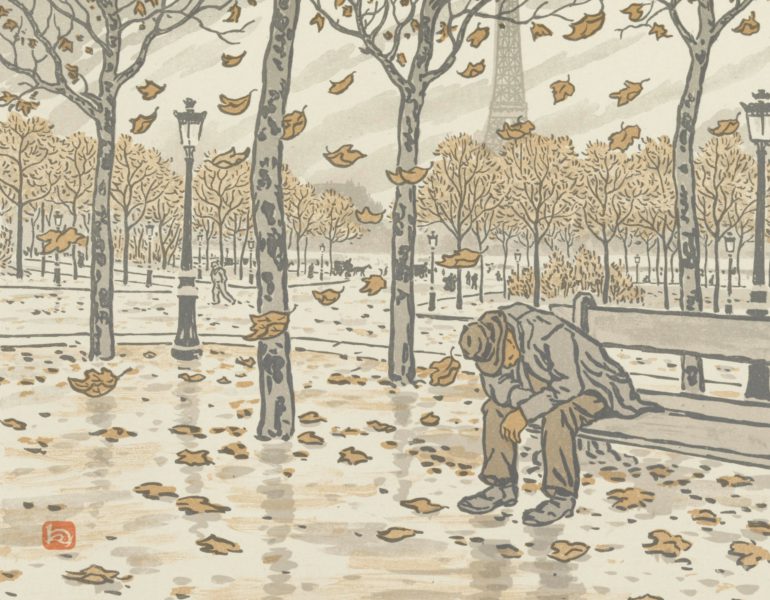
(“From the Jardins du Trocadéro, Autumn,” by Henri Rivière, Van Gogh Museum, Amsterdam (Vincent van Gogh Foundation))
Red is referred to as the “ultimate sad girl album” by fans. Although it features upbeat songs like “Twenty-Two,” “Holy Ground,” and “We Are Never Ever Getting Back Together,” there is also a darker tone to the album. The notorious “All Too Well” was written to help Swift process heartbreak and a difficult time in her life. On “The Lucky One” she sings about the realities of fame and living your life in the public eye. This tragic looking man in From the Gardens du Trocadéro, Autumn looks exactly like the kind of person who would listen to Red. Other aspects of this painting, like the falling leaves, fit with the lyric “autumn leaves falling like pieces into place” from “All Too Well.” The setting of Paris is perfect because Swift filmed her “Begin Again” music video in Paris. All that’s missing is a pair of heart-shaped glasses to cover up the tears.
1989

(“Study VI, New York Harbor,” by Richard Estes)
1989 was a massively successful album when it came out in 2014, and many still associate Taylor Swift with songs like “Shake it Off” and “Blank Space.” The imagery of this album is centered around two things. Number one is New York City, due to the song “Welcome to New York.” The second is the beach, due to the blue color theme of the album and the seagulls featured on both versions of the album covers. Study VI, New York Harbor features both the scenic skyline of NYC (from 1997) and the blue harbor waters. It’s a view that many people arriving to New York would see as the city welcomes them for the first time.
Reputation
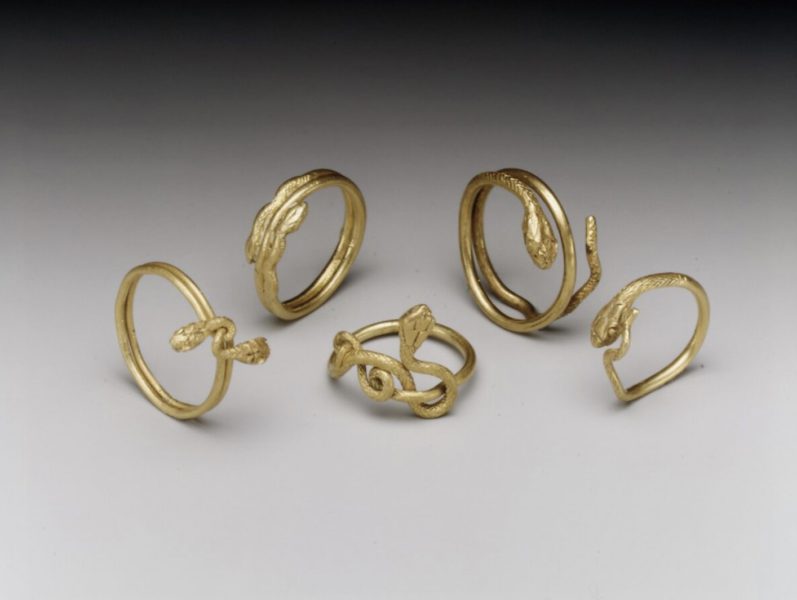
(Snake Rings, artist unknown)
For Swift, everything took a turn for the worse in 2016. Suddenly it seemed like Taylor Swift was the most hated celebrity in the world. She was known as a lying, manipulating backstabber, and the public began to call her a snake. Her reputation was absolutely ruined. For a few months she completed disappeared from the public eye. When she returned, it was with a new album: Reputation. Reputation was darker, angrier, and more honest than her previous albums, but it still had a softer love-struck side. Swift took the public hate and used it to her advantage. The Reputation stadium tour was wildly successful. She also took the insult “snake” and made snakes into her personal symbol. On the tour, a 30-foot-tall inflatable cobra would rise out of the stage and loom over the audience. This set of gold snake rings would make the perfect accessory for Swift’s snake-themed performances. These rings were created in the 1st century C.E., and the name of the artist is unknown.
Lover
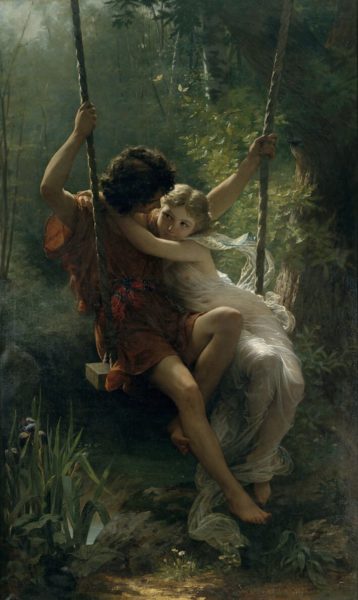
(“Springtime,” by Pierre-Auguste Cot)
This art piece, Springtime, has been referred to by John Wolfe as a “reveling pair of children, drunken with first love.” Unsurprisingly, Swift’s album Lover is filled with love songs- and breakup songs. It can be summed up in a lyric from the hit “Cruel Summer,” where Swift sings, “I love you, ain’t that the worst thing you ever heard?”
Folklore
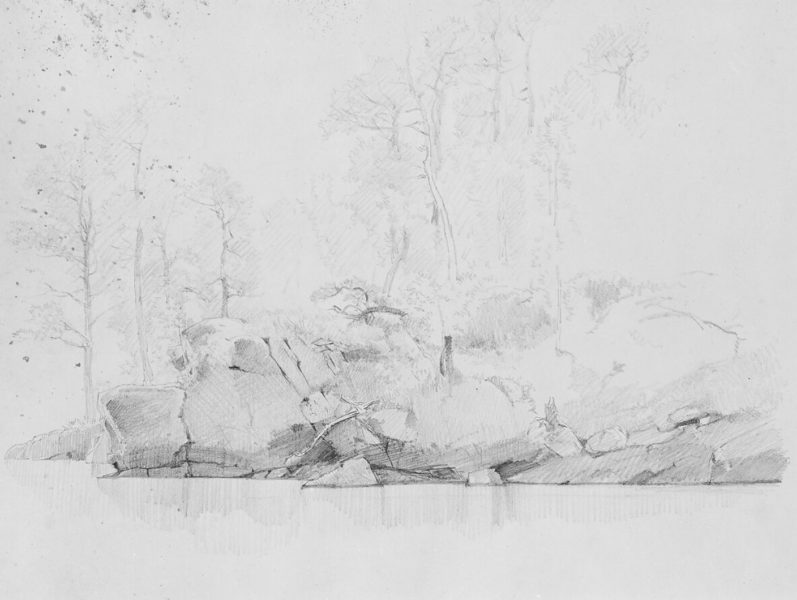
(“Study of Rocks and Trees by a Lake,” by Albert Bierstadt)
Folklore was written in 2020 during the global shutdown. Writing in isolation, Swift took on a unique concept for this album. Instead of writing songs about her own life, she came up with characters and stories to weave into songs. For example, the song “Betty” is about a boy named James who cheats on his girlfriend, and how he’s trying to win her back. This is her first alternative album and it has a very different feel from any of Swift’s previous work. The imagery of this album is centered in the woods and on the shores of lakes. On her Eras Tour, Swift performs her folklore songs in a giant cabin on the stage. The soft grays of Study of Rocks and Trees by a Lake fit well with the woodsy Folklore aesthetic. That shore would be the perfect place to sit and write these musical tales.
Evermore
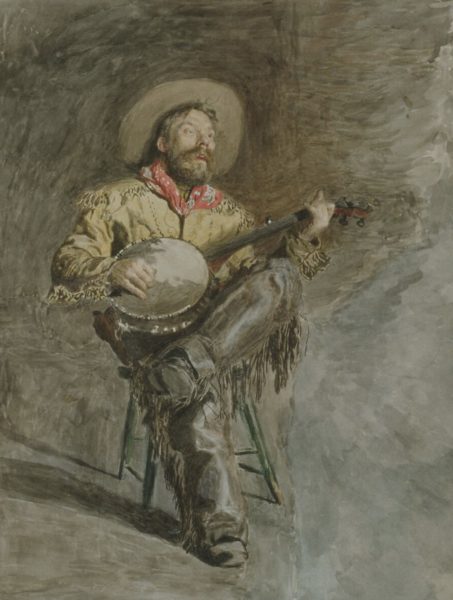
(“Cowboy Singing,” by Thomas Eakins)
Evermore is Folklore’s darker and angrier sister. There are songs about lost love, like “Tolerate It,” “Champagne Problems,” and “‘Tis the Damn Season.” There’s also an aspect of outlaws, like on “No Body, No Crime” where Swift sings about cheating and murder, and “Cowboy Like Me,” where two hustlers fall in love. Banjo is a prevalent instrument on the album. This singing cowboy by Thomas Eakins perfectly represents the wild criminal side of Evermore, but also the wistful and heartbroken one. He might be an outlaw by day, but at night he picks up his banjo and sings his heart out.
Midnights

(Tile with Image of Phoenix, artist unknown)
Midnights, Taylor Swift’s tenth album, combines the synth pop of 1989 with the poetic songwriting of Folklore. The album comes with a sense of sadness and deep reflection, the kind that most people would do late at night. On her song “You’re Losing Me,” Swift sings “I’m getting tired even for a phoenix.” She is known for reinventing herself with each album. This midnight-blue phoenix, created by a Persian artist in the late 13th century, makes the perfect symbol for the Midnights album.
The Tortured Poets Department
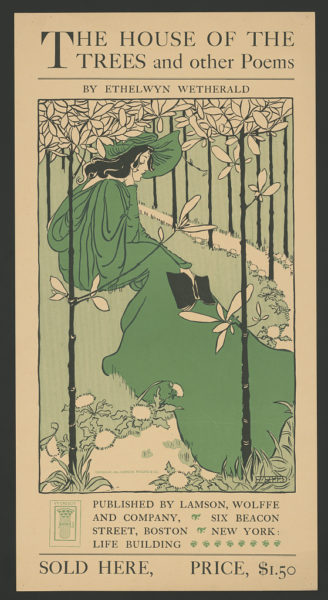
(“The House of the Trees and Other Poems,” cover by Ethel Reed)
The Tortured Poets Department, and the surprise addition of the Anthology, is some of Taylor Swift’s most raw work. It’s emotional, lyrical, and passionate. It’s more desperate, more despairing, more wild than any of her previous albums. The cover of The House of Trees and Other Poems fits with this album for two reasons. Number one, it’s a book of poetry written by Ethelwyn Wetherald, a female author. Her poems explore human emotion, a main focus on The Tortured Poets Department. Reason number two is the artist who designed the cover, Ethel Reed. Reed was an artist in the 1800s who defied the gender norms of her time by paving her own career pathway, falling in love with whomever she wished, and refusing to settle down and get married. She was a notorious and controversial artist in her time, but has been largely forgotten by the modern era. Swift, Wetherald, and Reed are all strong women who pursued their passions and made something of themselves. They’re all connected by poetry in this book cover.
 Studio Stories: America Martin
Studio Stories: America Martin Gallery MAR Holiday Gift Guide 2025
Gallery MAR Holiday Gift Guide 2025 The Art of People - Capturing Sonder
The Art of People - Capturing Sonder